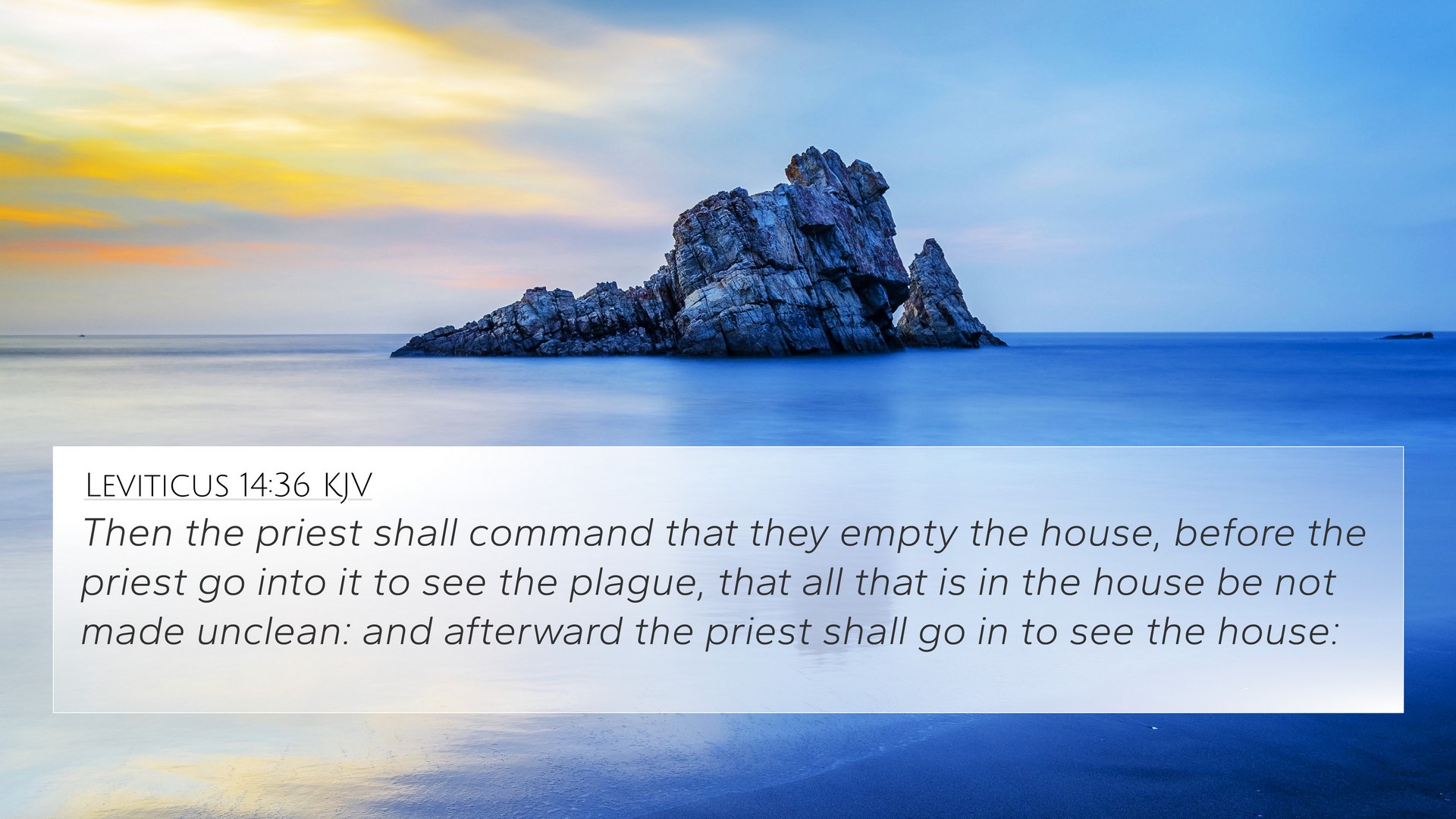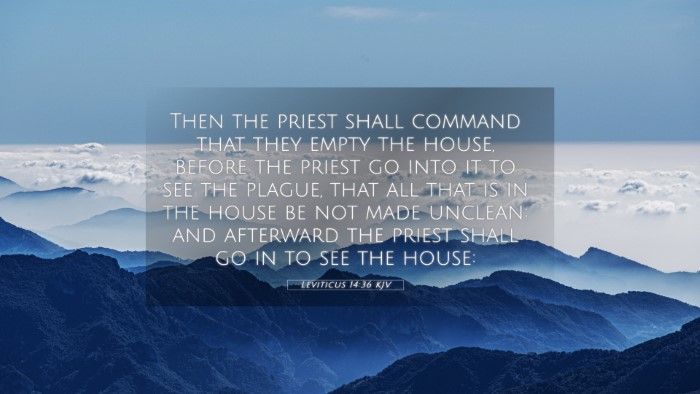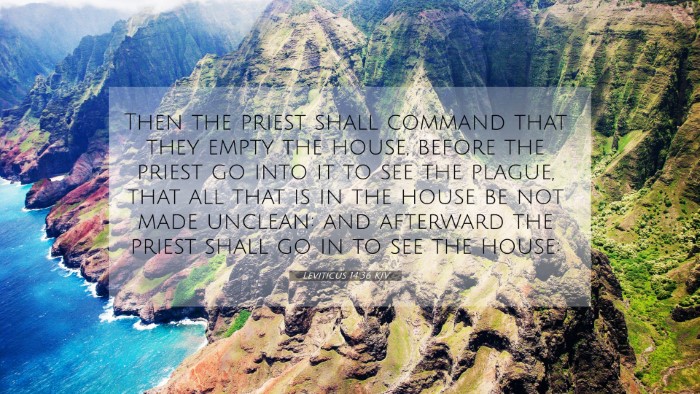Understanding Leviticus 14:36
Leviticus 14:36 states: "Then the priest shall command that they empty the house before the priest goes in to see the plague, that all that is in the house may not be made unclean; and afterward the priest shall go in to see the house." This verse, found in the Old Testament, provides instructions regarding the ceremonial aspects of addressing a suspected case of a skin disease, particularly in the context of homes.
Detailed Insights from Public Domain Commentaries
This verse is deeply embedded in the ceremonial laws given to Moses, illuminating the intricate relationship between purity laws and Israelite worship. The accompanying commentaries provide various interpretations and contextual insights:
- Matthew Henry's Commentary:
Henry emphasizes the importance of cleanliness and preparation for the priest before conducting an examination of the house. The emptying of the house reflects a broader theme of purity and the need for the people to be conscious of and proactive about spiritual cleanliness.
- Albert Barnes' Notes:
Barnes explains that the emptying of the house serves a dual purpose: it prevents unnecessary contamination of the household items and underscores the seriousness with which the Israelites should regard physical and spiritual cleanliness. This preventative measure ensures that nothing within the house becomes unclean before inspection.
- Adam Clarke's Commentary:
Clarke provides detailed notes on the ceremonial laws associated with leprosy, stressing that such laws, while specific to a cultural and historical context, emphasize the overarching theme of holiness and separation from defilement, applicable to all believers in seeking a holy life.
Thematic Connections and Cross-References
Leviticus 14:36 is a part of a larger narrative discussing the laws regarding leprosy and contamination. It provides insightful connections to various other biblical themes and verses. Here are some notable cross-references:
- Leviticus 13:11: Discusses the priest's role in examining skin diseases.
- Leviticus 15:31: Highlights the importance of distinguishing between the clean and unclean.
- Numbers 5:2-3: Speaks about isolating those who are ceremonially unclean.
- Matthew 8:3: Connects with Jesus' healing of lepers, bridging the Old and New Testament purifications.
- 2 Corinthians 6:17: Reinforces the theme of separating from unclean things for spiritual sanctity.
- Hebrews 12:14: Encourages holiness and the pursuit of peace, echoing Levitical themes.
- 1 John 1:7: Illustrates the connection of walking in the light to one’s purity in Christ.
Applying the Insights
Exploring this verse allows for deeper reflection on personal and communal purity in spiritual life. It encourages believers to empty themselves of distractions and potential impurities in their lives, much like the instructions given for the houses in ancient Israel.
Key Themes in Leviticus 14:36
- The Symbolism of Cleansing: The act of emptying the house symbolizes the prioritization of spiritual cleanliness.
- Priestly Authority: The priest's role indicates the importance of spiritual leadership in guiding the community toward purity.
- Community Responsibility: The congregational approach to tackling issues of purity signifies collective responsibility before God.
Conclusion and Reflection
Leviticus 14:36 is a powerful reminder of the need for vigilance when it comes to spiritual health and cleanliness. By looking into the connections between this verse and others, believers can better understand the importance of living a life consecrated to God.
As you study, consider how the cross-references enhance your understanding and encourage application in today’s context. Utilizing tools for Bible cross-referencing can greatly enrich your study experience, leading to a deeper understanding of scriptural unity and themes.






